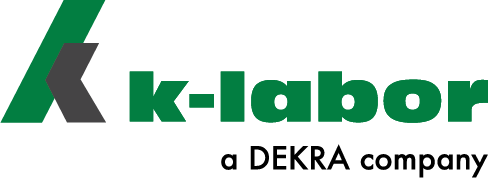We are expanding
our material know-how
and test services with
the DEKRA laboratories!
Find out more in our
press release.
News:
Titanium alloys and titanium purity of medical instruments and implants according to
Accredited test laboratory
for materials testing, product testing & failure analysis.
Your specialist for metals,
plastics, elastomers.
We are expanding
our material know-how
and test services with
the DEKRA laboratories!
Find out more in our
press release.
News:
Titanium alloys and titanium purity of medical instruments and implants
according to DIN EN ISO 832
Accredited test laboratory
to DIN EN ISO / IEC 17025.
Your specialist for metals,
plastics, elastomers.
UV test and weathering.
Climate change is making it increasingly important to prove the UV resistance of plastics and coatings. With a professional UV test in accordance with DIN EN ISO 4892-2, we put the durability of your materials and products to the test. We adapt the climatic conditions exactly to your individual specifications – whether through UV radiation or combined weathering.
Our services at a glance:
- Artificial irradiation or weathering in accordance with DIN EN ISO 4892-2
- Determination of hot light fastness in accordance with PV 1303
- Hot light ageing in accordance with DIN EN ISO 105-B06
Artificial irradiation or weathering according to DIN EN ISO 4892-2
The standard describes the artificial irradiation or weathering of plastics in test chambers with xenon arc lamps. It forms the basis for many UV tests, as it provides practically relevant radiation spectra for ageing simulation. The assessment is carried out, for example, using tensile tests and other mechanical-physical parameters in comparison with untreated samples.
In everyday language, UV resistance usually refers to the material resistance of a component or product when stored outdoors. Naturally, outdoor storage involves not only exposure to the UV component of sunlight, but also many other ageing-relevant influences, such as the effects of wind, moisture, different temperatures, pollutants, etc. It is impossible to simulate all these influencing variables in a single UV test in the laboratory.
Therefore, the accelerated ageing of a component or product by UV light, for example using filtered xenon arc radiation, only represents a partial aspect of resistance to outdoor weathering. It only allows a rough estimate of the behavior under real outdoor conditions.
Weathering instead of irradiation is the term used when the component or product is also sprayed with water in defined cycles during irradiation. UV tests with integrated moisture exposure can thus provide realistic information on material stability. However, reliable statements on the resistance of plastics can best be made through outdoor weathering tests under real conditions. However, as these are very time-consuming, accelerated laboratory tests are usually used in practice.
Testing the ageing resistance of plastics
Plastics are indispensable in many industrial sectors and must retain their mechanical, thermal and chemical properties over the long term, even under demanding conditions. To ensure the service life and durability of these materials, we offer comprehensive ageing tests in accordance with the relevant DIN EN ISO standards.
Our test methods:
- Thermal ageing: We use artificial thermal ageing to investigate the behavior of plastics at elevated temperatures over longer periods of time. This is particularly important for applications with high ambient temperatures or thermal loads.
- UV and light ageing: We use UV irradiation in accordance with DIN EN ISO 4892-2 to simulate the effects of sunlight and artificial radiation on plastics in order to evaluate their resistance to weathering and radiation.
- Hydrolytic ageing: Moisture and water absorption can influence material structures and mechanical properties. We test the hydrolytic resistance of plastics under different environmental conditions.
- Chemical ageing: We test the resistance of plastics to chemicals such as solvents, cleaning agents, oils or other aggressive substances to ensure long-term material integrity.
- Mechanical properties after ageing: After ageing, we analyze changes in tensile strength, elasticity, fracture behaviour and other mechanical parameters in accordance with DIN EN ISO 527 (tensile test for plastics).
Relevant standards:
Our test methods are based on recognized standards such as
- DIN EN ISO 4892-2: Artificial weathering of plastics
- DIN EN ISO 527: Mechanical testing of plastics after ageing
- DIN EN ISO 22088: Resistance to stress cracking
Our ageing tests provide you with a reliable assessment of material durability, which contributes to the optimization of products and compliance with regulatory requirements.
Determination of hot coating fastness according to PV 1303
The test standard PV 1303 of Volkswagen AG (VW/Audi) describes the hot exposure of components (non-metallic materials) of vehicle interiors to determine color fastness and resistance to light and heat.
Hot light aging according to DIN EN ISO 105-B06
DIN EN ISO 105-B06 describes the procedure for testing color fastness and aging against artificial light at high temperatures (testing with the xenon arc lamp).

